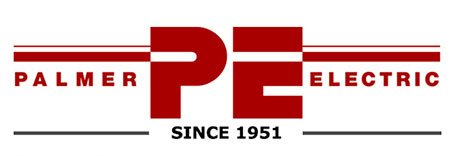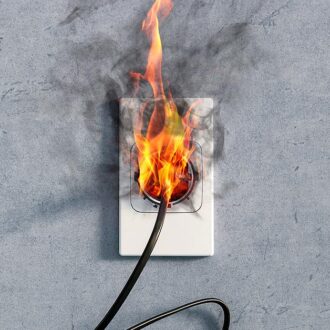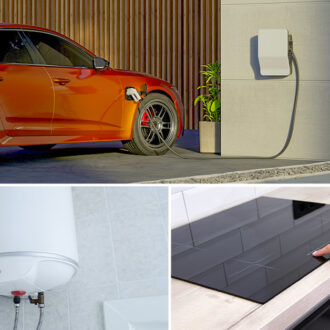How To Keep Your Electric Bill Low
- How To Keep Your Electric Bill Low
- How To Lower Your Electric Bill FAQ’s
- How To Lower Electric Bill In Summer
- How To Lower Electric Bill In Winter
- Does Unplugging Things Save Energy?
- Does Rewiring A House Save Energy?
- Will A New AC unit Lower My Electric Bill
- Can An Old AC unit Cause High Electric Bill
- Do Window AC Units Make Your Electric Bill Go Up
- Do Solar Panels Lower Your Electric Bill?
- Licensed Electrician in Orlando, FL
Tired of watching your electric bill climb higher month after month? You’re not alone; thousands of Americans struggle with the high costs of energy and inflation. Whether it’s Florida’s year-round AC use, aging appliances, or inefficient lighting, there are plenty of reasons your monthly energy costs might be higher than they should be. The good news? You have more control than you think.
In this guide, we’ll walk you through practical, proven ways to reduce your electric bill, from small daily habits to smart home upgrades. Whether you’re a homeowner looking to cut costs or just want to be more energy-conscious, these tips can help you save money without sacrificing comfort. Let’s get started.
How To Keep Your Electric Bill Low If You Want To Save Money
If you’re looking for practical ways to reduce your electricity costs, there are several smart strategies you can implement at home. From adjusting how you use your appliances to improving energy efficiency in your lighting, small changes can lead to significant savings over time. Whether you’re trying to cut expenses or simply stay within budget, these simple habits and small upgrades can help you lower your electric bill.
Air Conditioning and Heating Adjustments
- Adjust thermostat settings
| Season | Recommended Temperature (When Home) | Recommended Temperature (Away) |
|---|---|---|
| Summer | 78°F (25°C) | 85°F (29°C) |
| Winter | 68°F (20°C) | 60°F (16°C) |
- Raise the thermostat in summer, lower it in winter
| Season | Temperature Adjustment | Potential Savings (%) |
|---|---|---|
| Summer | +1°F (0.5°C) | 3-4% |
| Winter | -1°F (0.5°C) | 3-4% |
- Use ceiling and portable fans to supplement your HVAC system
- Turn off the fans when you leave the room
- Seal air leaks and insulate
- Schedule regular HVAC maintenance
- Close blinds and curtains during the day
Improve Lighting Efficiency
- Switch to LED bulbs
- Use natural light when possible
- Turn off the lights when leaving a room
- Use window coverings wisely
- Install dimmer switches
- Use smart power strips
- Use timers and motion sensors
| Bulb Type | Estimated Annual Energy Cost | Lifespan |
|---|---|---|
| Incandescent | $4.80 | 1,200 hours |
| CFL | $1.20 | 10,000 hours |
| LED | $1.00 | 25,000 hours |
Clean And Wash With Less Energy
- Run appliances on full loads
- Wash clothes in cold water
- Air-dry dishes
- Air dry clothes and avoid using the dryer when possible
- Clean the lint trap before every dryer use
Cook With Less Energy
- Use small appliances instead of the oven
- Avoid preheating the oven unless necessary
- Match your pots and pans size to the stove’s burner size
- Keep lids on pots when cooking
- Don’t open the oven door frequently while using it
- Adjust fridge and freezer temperature settings
| Appliance | Optimal Temperature (°F) | Potential Savings (%) |
|---|---|---|
| Refrigerator | 37-40 | 5-10% |
| Freezer | 0-5 | 5-10% |
Optimize Appliance Usage
- Shut down devices you’re not using
- Unplug electronics when not in use (eliminate phantom energy waste)
- Enable energy-saving settings on devices
- Avoid screen savers on computers; instead, use the sleep mode
| Appliance | Standby Power Consumption |
|---|---|
| Microwave | 3-5 watts |
| Phone Charger | 0.1-0.5 watts |
| Coffee Maker | 1 watt |
Improve Insulation and Seal Leaks:
- Seal air leaks around windows with caulk
- Seal Gaps Around Pipes, Vents, and Electrical Outlets
- Weatherstrip exterior doors
- Install door sweeps
| Action | Estimated Cost | Potential Savings per Year |
|---|---|---|
| Weather Stripping | $20 – $50 | $30 – $80 |
| Caulking | $5 – $20 | $20 – $70 |
| Door Sweeps | $5 – $15 | $10 – $40 |
Maintain appliances:
- Inspect, clean, and replace as needed
- Clean refrigerator coils regularly
- Change AC filters regularly
- Check seals on fridge and freezer doors
Water Heating
- Lower Water Heater Temperature
- Take Shorter Showers
Potential Electrical Yearly Savings
The 5 Largest Energy Users in a Home are:
- HVAC System (Heating and Cooling)
- Water Heater
- Washer & Dryer]
- Lighting
- Refrigerator
Take a look at the table below to get a better idea of how much you can save by implementing various energy-efficient strategies.
| Appliance/System | Typical Annual Cost | Recommended Change | Estimated Savings |
|---|---|---|---|
| HVAC (Heating & Cooling) | ~$1,800 | Set thermostat to 78°F (summer) / 68°F (winter); use a programmable thermostat | Up to 10% → ~$180/year |
| Water Heater | ~$600 | Lower temperature to 120°F | 6%–10% → ~$36–$60/year |
| Dryer (Clothes) | ~$150–$200 | Air dry 3–4 loads per week | Up to $150/year |
| Lighting | ~$300–$500 | Replace 20 bulbs with LEDs | $200–$300/year |
| Refrigerator | ~$200–$400 | Keep fridge full; clean coils 1–2x per year | Up to 25% → ~$50–$100/year |
Implementing these strategies can help you achieve significant savings on your electric bill, making your home more energy-efficient and cost-effective.
Apply for Time-of-Use (TOU) Rates
Many utility companies offer Time-of-Use (TOU) rate programs, which can help you save money by shifting your electricity use to off-peak hours. These programs charge lower rates during times when energy demand is lower (typically at night or early in the morning) and higher rates during peak hours when demand is highest.
By adjusting your energy use habits to off-peak times, you can take full advantage of these cost-saving opportunities.
Use appliances during off-peak hours.
| Time of Day | Rate Type | Cost per kWh |
|---|---|---|
| 7:00 AM – 3:00 PM | Off-Peak | $0.10 |
| 3:00 PM – 9:00 PM | Peak | $0.25 |
| 9:00 PM – 7:00 AM | Off-Peak | $0.08 |
Enroll With Your Utility Provider
Applying is free in most cases, and some plans even include tools to help monitor and optimize your energy use. Check your provider’s website to see if you’re eligible and how to sign up.
EXAMPLE OF TOU PROVIDERS & RATES IN FLORIDA
| PROGRAM NAME | URL | Standard Rate vs TOU Rate | Enrollment Qualifications & Limitations | Peak & Off-Peak Times |
|---|---|---|---|---|
| FPL Time-of-Use (RTR‑1) | https://www.fpl.com/rates/time-of-use.html | Flat rate vs ~26¢/kWh (peak), ~9¢/kWh (off-peak) | Requires special meter & annual commitment. Not compatible with Budget Billing, On Call, or EVolution programs. | Nov–Mar: M–F 6–10 a.m. & 6–10 p.m. Apr–Oct: M–F noon–9 p.m. Weekends & holidays: off-peak all day |
| Tampa Electric Energy Planner | https://www.tampaelectric.com/business/billing-options/time-of-day-service/ | Tiered pricing: LOW, MEDIUM, HIGH, and CRITICAL. Low tier saves up to 2.87¢/kWh compared to standard. | Requires programmable devices (HVAC, water heater, etc.). Not available to solar net-metering or Prime Time Plus customers. | HIGH: ~13.4% of hours (never on weekends/holidays) LOW: ~27.7% of hours CRITICAL: <1.5% annually (rare events) |
| Duke Energy TOU (Residential) | https://www.duke-energy.com/home/billing/time-of-use | Discount: as low as ~3.5¢/kWh Peak: higher than flat rate Off-peak: cheaper than standard | Available to residential customers; EV off-peak credit ($7.50/month) for qualifying Level 2 charger setups. | Discount Hours: Dec–Feb: 12–3 a.m.; Mar–Nov: 12–6 a.m. On-Peak: May–Sept: 6–9 p.m.; Dec–Feb: 5–10 a.m. & 6–9 p.m. All other hours: off-peak |
How To Lower Your Electric Bill If You Can Invest In Upgrades And Repairs
If you’re ready to go beyond daily habits and have some extra money to make smart home upgrades, certain investments can deliver long-term energy savings. From insulation improvements to appliance upgrades, these changes can significantly lower your monthly utility costs and carbon footprint while increasing comfort and efficiency.
Thermostat Management
- Use a Programmable Thermostat
- Upgrade to a Smart Thermostat
| Thermostat Type | Potential Savings (Annual %) |
|---|---|
| Programmable Thermostat | 10-15% |
| Smart Thermostat | 15-23% |
Weatherproof Your Home
- Insulate Attics, Walls, and Crawl Spaces
- Seal and Insulate HVAC Ductwork
- Insulate Your Water Heater
- Insulate Hot Water Pipes
| Upgrade Type | Potential Savings (Annual %) |
|---|---|
| Attic Insulation | 10-50% |
| Duct Sealing | 10-15% |
| Water Heater Insulation | 7-16% |
Energy-efficient Upgrades
Replace the following with energy-efficient or ENERGY STAR® Models:
- Windows, Doors, and Skylights
- Air Cleaners
- Clothes Dryers
- Clothes Washers
- Dehumidifiers
- Dishwashers
- Electric Cooking Products
- Refrigerators
- Air-Source Heat Pumps
- Boilers
- Central Air Conditioner
- Ductless Heating & Cooling
- Furnaces
- Ventilation Fans
- Pool Pumps
- Water Heaters
- Smart Home Energy Management System
| Appliance Type | Average Savings (Annual %) |
|---|---|
| Refrigerator | 10-20% |
| Dishwasher | 12% |
| Washing Machine | 25% |
REBATES EXAMPLES FOR HOME IMPROVEMENT UPGRADES
Learn More At The Duke Website – https://www.duke-energy.com/home/products/home-energy-check
| IMPROVEMENT UPGRADE | REBATE | DESCRIPTION |
| Attic insulation | up to $800 | For single-family homes, Duke Energy offers a rebate of $0.31 per square foot (up to $800) to bring insulation from R-2 or less to a minimum of R-38. |
| Duct test and repair | Up to $450 | Duke Energy offers a rebate of up to $450. $50 toward the $100 duct test and $400 toward the cost of duct repair per HVAC system. |
| Energy-efficient windows | Up to $800 | Duke Energy offers a rebate of $4 per square foot of window area (up to $800) on east-, west- and south-facing windows. |
Consider solar panels
Installing solar panels is a smart, long-term investment that can lower your electric bill and boost your home’s efficiency. Here’s why:
- Lower Monthly Utility Bills: Generate your own electricity and reduce reliance on the grid.
- Take Advantage of Tax Credits & Incentives: Federal and local programs can offset installation costs.
- Earn Credits with Net Metering: Sell excess energy back to the grid in many areas.
- Increase Home Value: Solar-equipped homes often sell faster and at higher prices.
- Low Maintenance, Long Lifespan: Most systems last 25+ years with minimal upkeep.
- Protect Against Rising Energy Costs: Lock in long-term savings and reduce your carbon footprint.
| Solar Panel Installation | Potential Savings (Annual %) |
|---|---|
| Solar Panels | 50-75% |
SOLAR TAX CREDITS EXAMPLE
| Program Name | Benefit | What It Covers | Eligibility & Notes |
|---|---|---|---|
| Residential Clean Energy Credit (Section 25D) | 30% tax credit for qualified clean energy systems | Solar panels, solar water heaters, battery storage (≥3 kWh), wind, geothermal | No cap; available through 2032, then phases down. File IRS Form 5695. |
| Battery Storage Credit (New as of 2023) | Included in 30% credit if batteries are charged by solar | Standalone or solar-connected batteries (≥3 kWh) | Qualifies even if installed separately from solar panels. Applies to new or existing homes. |
| Solar Installation + EV Charger Credit | 30% up to $1,000 for EV charger if tied to solar system | EV charging station at home connected to a solar array or renewable power source | Must be installed in low-income or non-urban area to qualify (under 2023 Inflation Reduction Act changes). |
How To Lower Electric Bill In Florida
Winter in Florida is the perfect time to enjoy an all-time low electricity bill. Here are some tips that will help you save in the winter and summer, as well as some heating tricks for our cold-weather friends.
- During the winter, set your thermostat to the lowest temperature that you can comfortably tolerate. On cool days, for example, turn your thermostat off while you’re not home. When you get home, setting the heat to kick on at 60 degrees will allow you to sail through most of Central Florida’s winter using zero electricity on AC and heating. Pulling out the cool weather sweaters and piling on extra blankets will allow you to fall far below your average electric bill.
- Summer in Florida is another story. Find the highest temperature that you can comfortably tolerate after adding ceiling fans and stand-alone fans in your home.
- Keep your cooling system clean and maintained. It is very important to change your air filter regularly during hot summer months.
- During the summer, avoid using the oven to cook during the hottest part of the day. Cook with a grill, prepare cold cuts and salads, or use the microwave to keep the house cooler.
- Make use of cool mist systems, cooler showers, and cross ventilation for some traditional ways of weathering the hot months with minimal electricity bill costs.
- Control Pool Pump Usage: If you have a pool, your pump could be one of the largest contributors to your electric bill, especially in the summer. Most Florida homeowners run their pool pumps far longer than necessary. For most pools, 6–8 hours a day is sufficient to maintain water quality during hot months, and even less is required in the winter. If possible, consider installing a timer or upgrading to a variable-speed pump, or an Energy Star pool pump, which uses significantly less energy than older single-speed models.
Some tips for trapping heat during the winter include:
- Fix leaks in your home and add insulation instead of using energy-draining space heaters.
- Keep radiators and vents clear.
- Circulate warm air with fans.
- Keep windows securely covered for extra insulation.
- Seal your chimney flue when not in use. (Remember to open during use.)
Additional Tips for a Lower Electric Bill
If you’ve already made changes to your thermostat settings, lighting, and appliance habits, there are still a few more steps that can help you lower your electric bill even further. These strategies can give you greater insight into your energy use and highlight areas where you can save even more.
Consider an Energy Audit
An energy audit is a professional assessment of your home’s energy use. It helps identify where you’re losing energy, such as leaky ducts, poor insulation, outdated appliances, or inefficient windows. Many utility companies offer free or low-cost audits. The recommendations from an audit can guide smart upgrades that often pay for themselves in energy savings.
EXAMPLES OF ENERGY AUDIT IN FLORIDA
| Onsite Home Energy Survey | https://www.fpl.com/save/programs/onsite-energy-survey.html |
| Home Energy Check | https://www.duke-energy.com/home/products/home-energy-check |
| Home Energy Assessments | https://www.energy.gov/energysaver/home-energy-assessments |
Monitor Your Energy Usage
Tracking your electricity use can help you understand your consumption patterns and adjust accordingly. Use your utility’s online dashboard or install an energy monitoring device to see real-time data. This allows you to pinpoint high-usage appliances, detect unusual spikes, and make changes that lead to lower bills. Some smart thermostats and home energy apps also offer insights tailored to your specific habits and home layout.
EXAMPLES OF ENERGY MONITORING PROVIDERS IN FLORIDA
FPL | Energy Manager: Monitor, Analyze, & Simulate
|
DUKE | Monitor Usage:
|
Federal Rebates and Energy Incentives
If you’re a homeowner looking to save on energy costs, here’s some good news, the federal government is offering a range of tax credits and rebates to help you make your home more energy-efficient. From solar panel installations and heat pumps to upgraded insulation and electric vehicle chargers, these programs can significantly lower the upfront cost of home improvements that also lower your monthly utility bills.
Whether you’re planning a small upgrade or a major energy-efficient overhaul, here’s a quick look at some of the most valuable federal incentives available right now:
| Incentive | Amount | Applies To | Deadline |
|---|---|---|---|
| Energy Efficient Home Improvement Credit | Up to $3,200/year | Insulation, HVAC, windows, heat pumps | Dec 2023–2032 |
| Residential Clean Energy Credit | 30% (no cap, fuel cells limited) | Solar, geothermal, batteries | Through 2032 (with phase-down) |
| EV Charger Credit | Up to $1,000 (30%) | Home EV charger installation | Through 2032 |
| Heat Pump / HVAC credits | Up to $2,000 (air-source); 30% (ground-source) | Energy-efficient heating/cooling | Covered under 25C–25D credits |
| HEEHRA Rebate | Up to $8,000 (income-based) | Heat pump systems, other electrification | Funding active in 2025 |
How To Lower Your Electric Bill FAQ’s
Summers can spike your electric bill, but with a few smart habits and adjustments, you can stay cool without overspending. Use the tips below to reduce your energy use during the hottest months of the year.
- Adjust Your Thermostat
- Close Doors and Vents
- Close Blinds, Shades, and Drapes
- Cover Window Air Conditioners
- Use Ceiling Fans to Improve Air Circulation
- Avoid Using the Oven During the Hottest Hours
- Run Appliances Like Dishwashers and Dryers at Night
- Seal Air Leaks Around Windows and Doors
Most winter savings come from optimizing your home’s heating system and preventing heat from escaping. The tips below can help you stay warm while keeping your electric bill low.
- Optimize Your Heating System
- Lower Your Heater’s Temperature
- Use Ceiling Fans to Circulate Warm Air (Run the fan clockwise to push warm air down)
- Don’t block Heat Sources, move drapes or furniture away to allow heat flow
- Close Vents and Doors in Unused Rooms
- Close Fireplace Dampers When Not in Use
- Seal Doors with Weather Strips
Some appliances drain more energy than others while not in use, but over the course of a year, consistently unplugging your appliances will add up to savings on your electric bill. The U.S. Department of Energy estimates that unplugging appliances can save $100-$200 over the course of the year. Your computer, for example, costs you about $20 in wasted energy costs if you leave it plugged in all year. Phone charges, coffee pots, and other small appliances also take smaller tolls that add up.
While it’s difficult to reach behind desks, entertainment centers, and other furniture to unplug appliances when not in use, connecting your appliances to a power strip can make it easy to stop the energy drain. You also protect your appliances against an electrical surge at the same time.
If the wiring in your house is old, unplugging your appliances and cutting down on consumption may not be enough to reduce a hefty electric bill. In addition to cutting electricity costs, rewiring your home is important to your safety. According to the according to the U.S. Fire Administration, an average of 25,900 electrical in the U.S. each year cause an estimated 280 deaths, as well as 1,125 injuries and $1.1 billion in property loss.
Some common signs that it’s time to rewire your house include:
- The house is more than 40 years old and wiring has not been replaced
- Appliances spark when you plug them into an outlet
- Flickering lights
- Frequently tripped circuits
- Use of extension cords to power the home
- Smell of burning plastic coming from the outlets
- Electric shock when you plug in an appliance or touch the cord
- Two-pronged outlets with no ground wire, or other outdated wiring
Yes, upgrading to a new, energy-efficient AC unit can absolutely lower your electric bill. Usually, older air conditioners use more energy because they aren’t built with today’s efficiency standards. Over time, that can really drive up your monthly cooling costs, especially in Florida’s heat.
Newer models come with higher SEER ratings (Seasonal Energy Efficiency Ratio), which means they’re designed to cool your home using less power. That translates into real savings.
Here’s how a new AC can help you save:
- Improved Efficiency: Today’s units use advanced technology to cool your home more effectively with less energy.
- Lower Energy Use: A high-SEER unit needs less power to do the same job, so your monthly bills can drop noticeably.
- Shorter Run Times: A more efficient system may cool your space faster, which means it won’t need to run as long to keep you comfortable.
- Long-Term Cost Savings: While a new AC unit is an investment upfront, the energy savings over time can make it well worth it.
Example of how a new AC unit can lower your electric bill:
- Replacing a 10 SEER unit with a 13 SEER unit can save you around 23–30% on cooling costs.
- A 16 SEER unit could save you about 38%.
- And if you upgrade to a 20 SEER unit, you could cut your cooling bill by 50–60%.
So yes, a new AC might be one of the smartest energy-saving upgrades you can make, especially in the summer, when your AC works hard most of the year.
Yes, an old air conditioning unit is one of the most common reasons for rising energy bills, especially during hot summers.
Older AC systems aren’t as efficient as newer models. They use more energy to do the same job, which means you’re paying more just to stay cool.
Here’s why older units drive up your electricity costs:
Lower Efficiency: Older AC units usually need more electricity to cool your home compared to newer, high-efficiency systems.
Wear and Tear: Years of use take a toll. Dirty condenser coils, worn-out parts, and clogged filters can make your system work harder than it should, using more power in the process.
Refrigerant Leaks: If your system is leaking refrigerant, it won’t cool properly. That means it has to run longer to reach the desired temperature, which spikes your energy use.
If your AC is over 10–15 years old and your energy costs continue to rise, it may be time for an upgrade. If you can invest in a newer system, it will cool more efficiently and also save you money month after month.
Yes, running a window AC unit can definitely raise your electric bill, especially if you use it often or for long periods.
Window units are generally more efficient for cooling a single room, but they still use a good amount of electricity.
Why? Window AC units use power to run both the compressor and fan, which means more energy use than, say, a ceiling fan or portable fan, and over time, that adds up.
Also, window units are more efficient to cool individual rooms, but if you use multiple window AC units throughout the house, a central AC system might actually be more cost-effective and energy-efficient in the long run.
Yes, installing solar panels can significantly lower your electric bill. If you can generate your own electricity from sunlight, you reduce how much power you need to pull from the grid. That means less money spent on monthly utility bills, and in some cases, you might even get a credit if you produce more energy than you use.
Here’s how solar panels help you lower your electric bill:
Net Metering Benefits: In many areas, including parts of Florida, net metering allows you to send any extra power your system produces back to the electrical company. In exchange, you earn credits that can offset your future electric usage, sometimes resulting in a zero or even negative monthly bill.
Long-Term Savings: While solar panels do require an upfront investment, they typically pay for themselves over time through reduced energy costs. Over the lifespan of your system, you could save thousands of dollars.
Protection from Rising Utility Rates: Electric rates tend to go up over time. With solar, you lock in your own power source and enjoy more predictable energy expenses, even as grid prices climb.
Possible Zero or Negative Bills: With the right system and enough sunshine, you may generate more electricity than you use, leading to extremely low bills or even credits from your power company.
Licensed Electrician in Orlando, FL
Do you need help lowering your electric bill? Turn to the Electricians at Palmer Electric, like homeowners and business owners have done for Electrical Upgrades since 1951. Our Licensed Electricians can complete a home inspection to identify appliances and wiring issues that are causing your energy costs to exceed the average electric bill. Contact us for a free quote, fill out a contact form or call 407-646-8700.





